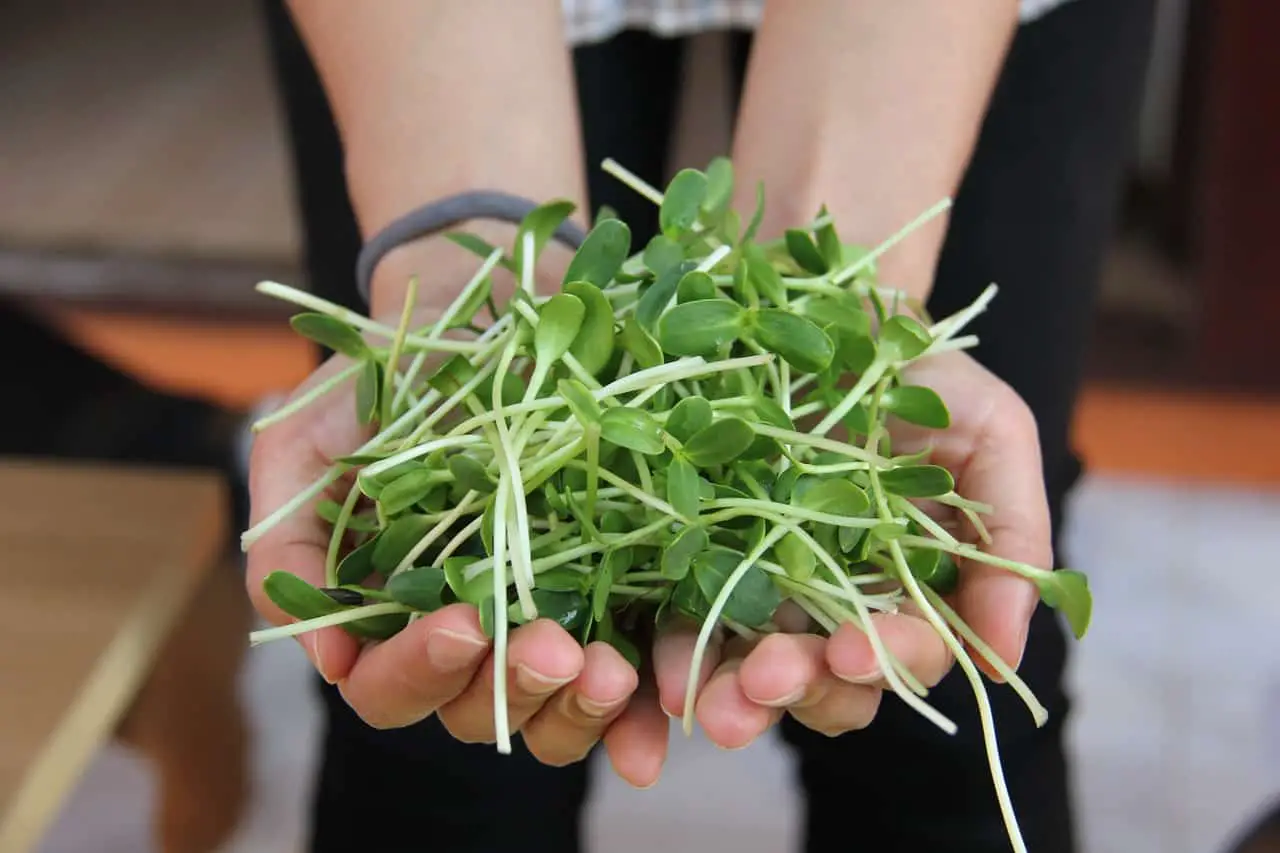Growing microgreens is a great hobby for people who want to grow their own food at home. This is particularly true if you live in an apartment or in a home that does not have space for a garden. Sunflower microgreens are one of the most popular types of microgreens, and they are easy to grow.
To grow successfully grow sunflower microgreens, soak the seeds in water for 12 to 24 hours. Then fill a growing tray with 1 to 2 inches of potting soil and sow the seeds. Cover the seeds with a thin layer of soil and water the soil every 24 hours with a spray bottle. Your sunflower microgreens will be ready to harvest 10 to 14 days after sowing the seeds.
The rest of this blog post will provide a more detailed description of what you need to know to get started growing sunflower microgreens.
What Are Microgreens?
Before I discuss the process of growing sunflower microgreens, it would be helpful to understand what microgreens are and how they differ from sprouts or baby greens. Microgreens are small, leafy vegetables that are harvested during the earlier stages of the plant’s growing cycle. Specifically, microgreens they are harvested just after the cotyledon leaves develop and prior to the formation of the true leaves.
Cotyledon Leaves are also known as seed leaves and are the first leaves to appear from a germinating seed.
Microgreens are often used as garnishes in gourmet restaurants because they have a delicate appearance.
Although sprouts, microgreens, and baby greens can all be grown from the same seeds, these terms describe distinctly different growing phases. Sprouts are eaten when the plant first germinates. To lear more about the differences between microgreens and sprouts, check out this article I wrote. Baby greens are harvested after the microgreen phase but prior to the plant growing to maturity.

Sprouts 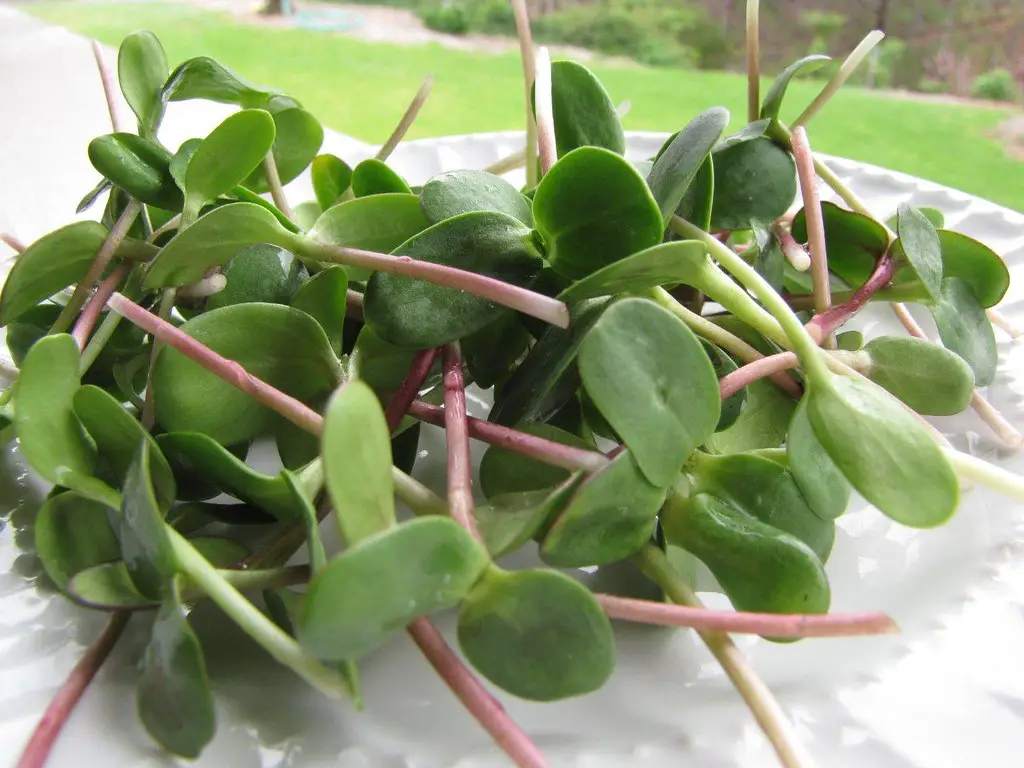
Sunflower Microgreens 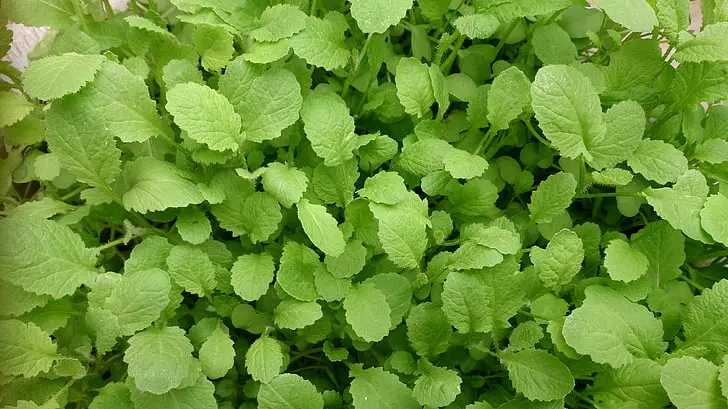
Baby Mustard Greens
About Sunflower Microgreens

Sunflower microgreens have a nutty, fresh flavor. They are one of the most popular types of microgreens due to their versatile use. Not only are sunflower microgreens delicious, they are also packed with nutrition. Research conducted by Dr. Qin Wang, who is an associate professor at the University of Maryland at College Park, found that microgreens are 4 to 40 times more concentrated with nutrients than their mature counterparts.
It is best to grow sunflower microgreens in potting soil or coco coir. Sunflower microgreens can be grown hydroponically, but is much more difficult than growing them in soil.
Growing Sunflower Microgreens Step by Step
The process outlined below has worked well for me, but there are variations that work for other people. Over time, you will figure out what works best for your specific growing environment.
Materials Needed To Grow Sunflower Microgreens
- Sunflower seeds – Purchase food-grade seeds when growing microgreens, especially if you plan to sell your microgreens. Although you can technically grow microgreens from bird seeds, these seeds contain chemicals that may not be suitable for human consumption.
- Growing tray/container – You could use “official” growing trays used by professional microgreen growers. However, any type of closed container such as takeout containers or Tupperware will work. Ideally, your growing tray should have drainage holes.
- Heating mat (optional) – A heating mat is not required to germinate seeds but they help. Heating mats are not very expensive ($15 – $20) and can be helpful.
- Food-Grade Hydrogen Peroxide
- Warm, soapy water
- Potting soil
- Spray Bottle
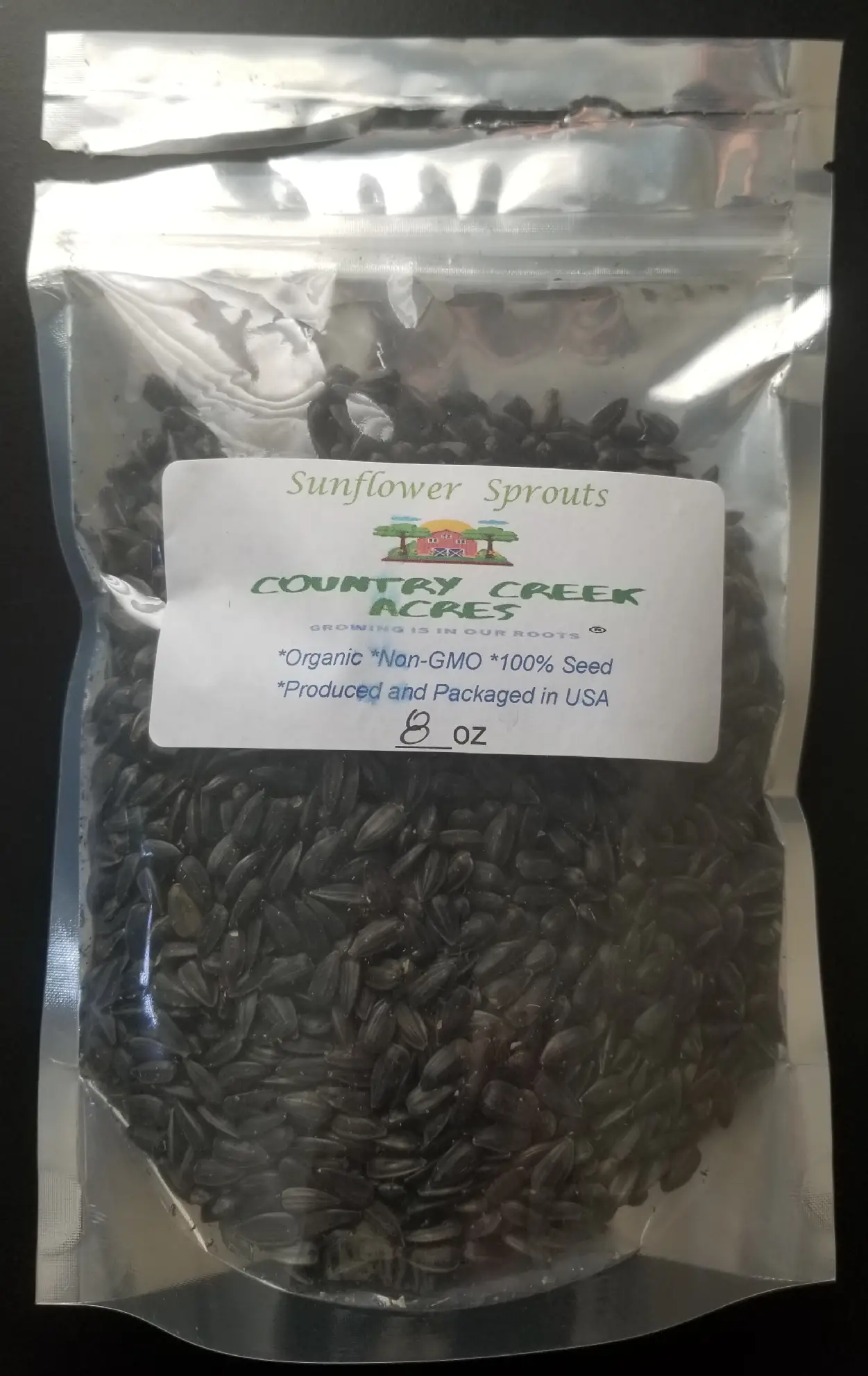
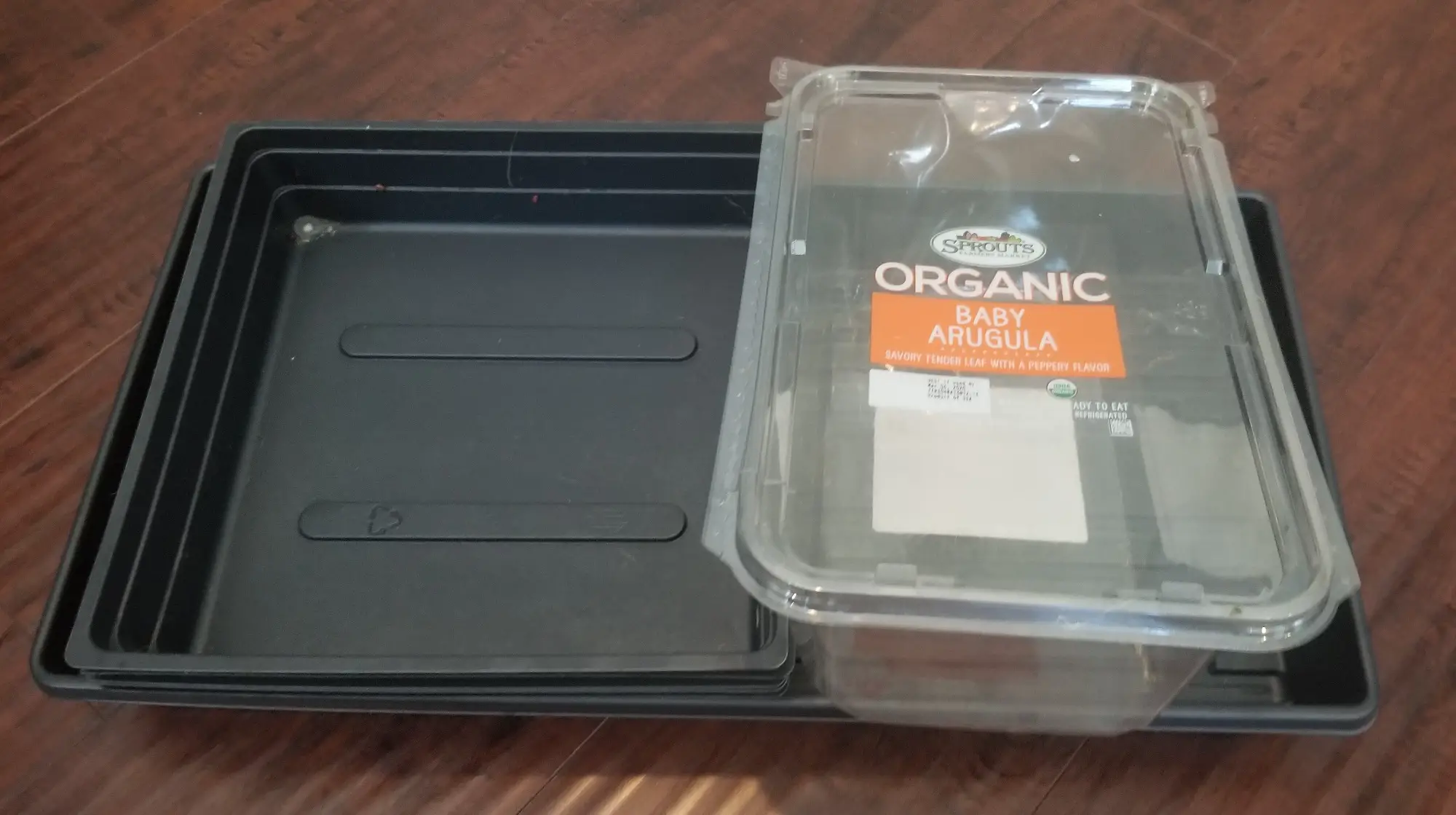
Steps For Growing Sunflower Microgreens
Step 1: Soak the sunflower seeds in tepid water for 12-24 hours. Soaking the seeds shortens the germination time. Add a teaspoon of hydrogen peroxide to the water to help minimize the chance of mold problems during the growing cycle. Do not soak the seeds longer than 48 hours as such a long soaking time can drown the seed.
Step 2: Wash your growing tray with warm, soapy water. Rinse all of the soap off of the growing tray and dry the tray. Cleaning the growing tray will minimize the chance of disease destroying your microgreens.
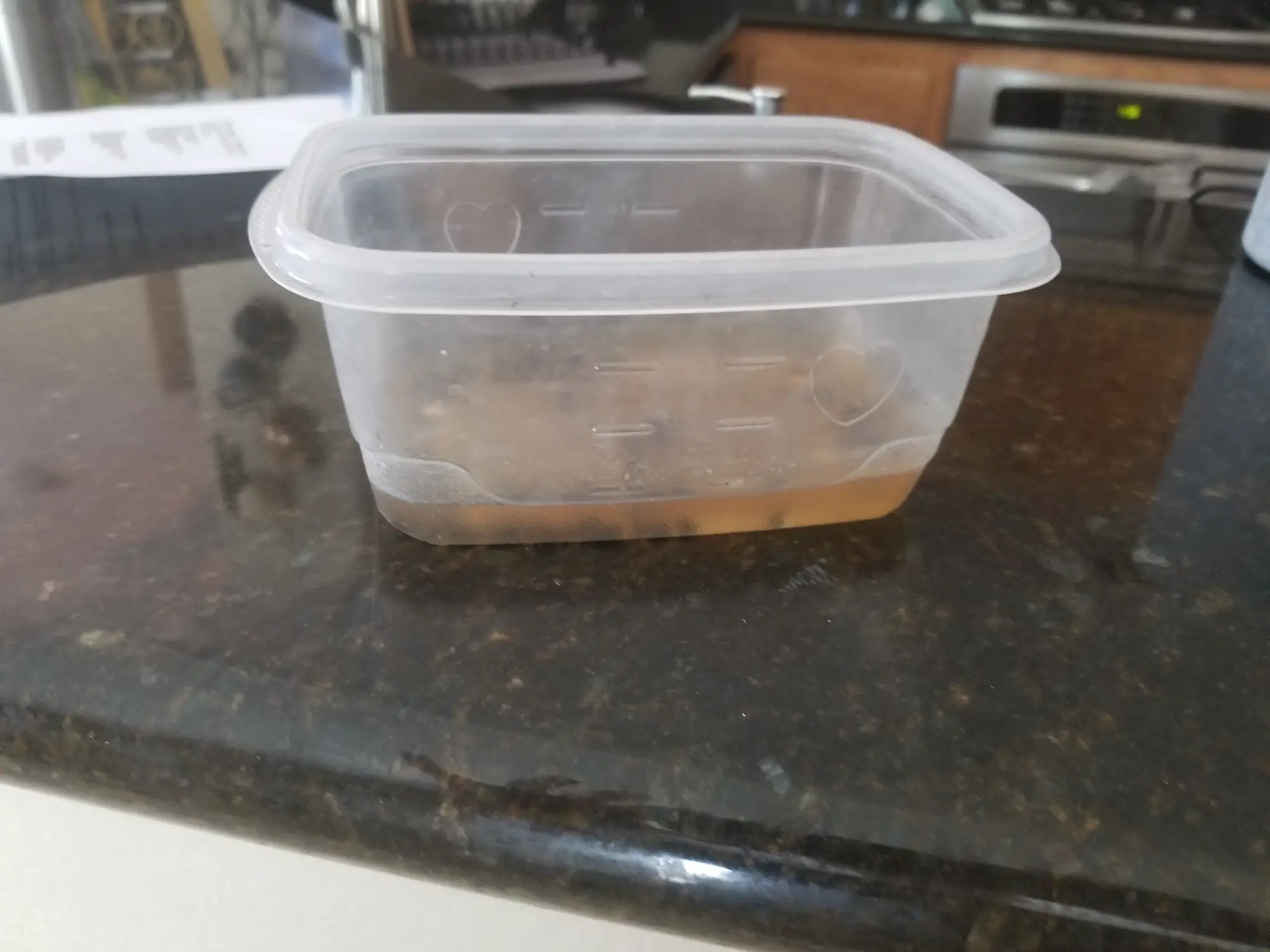
Step 3: Add 1 to 2 inches of soil to your growing tray, sprinkle the seeds on top of the soil, and cover the seeds with a thin layer of soil.
Step 4: Cover the growing tray with a lid or another growing tray to create a humidity dome and place the tray on the heating mat. Keep the tray covered for 48 hours (except to water).

Step 5: Use a spray bottle to water your microgreens every 12 hours until they germinate.
Step 6: After the seeds germinate (about 2 days), uncover the growing tray and place the growing tray by a sunny window or grow light. At this point, the plants will be a pale white or yellow color. This is normal. The plants will turn green after they have a chance to photosynthesize.
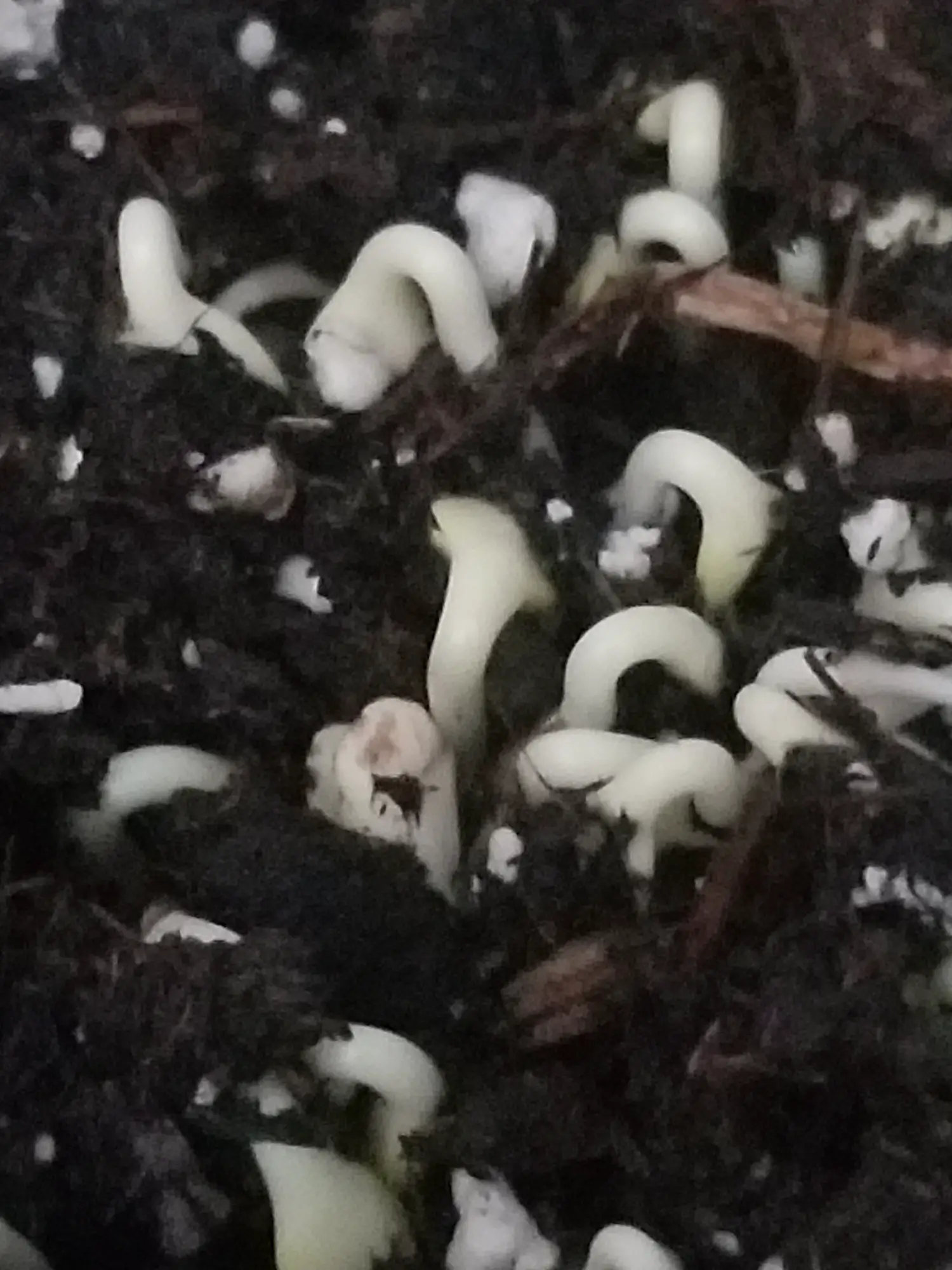
Sunflower microgreens after germinating 
Sunflower microgreens after they have had a chance to photosynthesize
Step 7: Leave the growing tray by a light source until the microgreens grow to a height of about 4 inches. Continue to water the microgreens every 12 to 24 hours. If your growing tray does not have drainage holes, take care not to overwater the plants as overwatering can cause root rot.
Step 8: Harvest your microgreens with a sharp knife or scissors. Wash before enjoying!
Mold on Microgreens
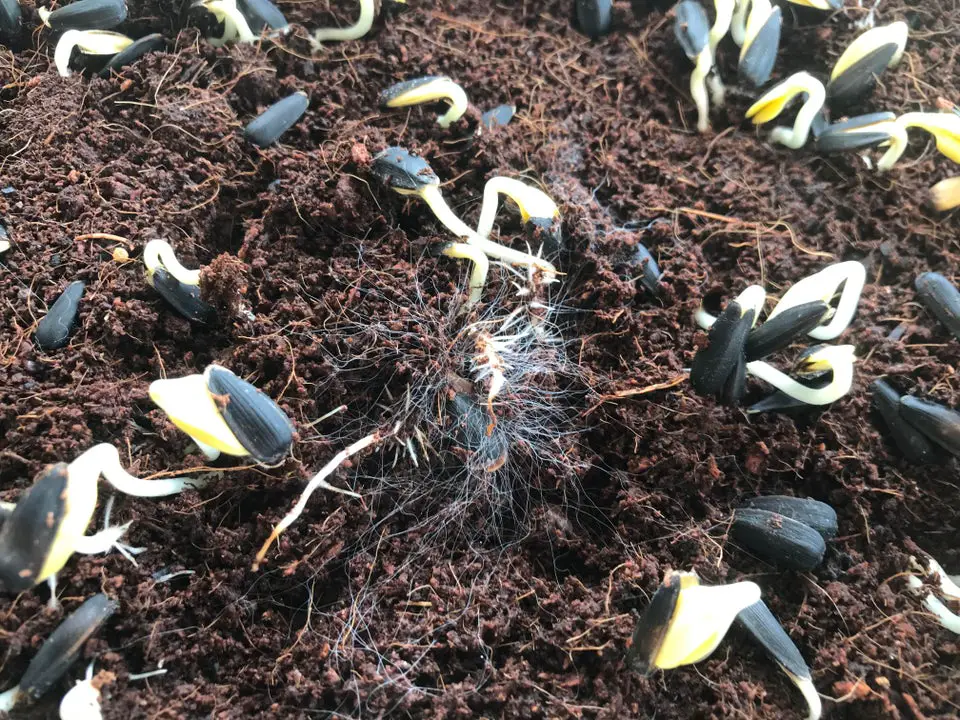
Source: Reddit User Hamuds95
Although growing microgreens is generally a pretty easy process, mold problems are somewhat common. Mold has a cobweb like appearance when it forms on sunflower microgreens. However, some microgreen growers may confuse root hairs for microgreens. If you are unsure, spray some water on the potential mold substance. If the white fuzz “disappears,” the fuzz is a group of root hairs. Otherwise, it is highly likely that you have a mold problem.
Unfortunately, microgreens are ruined once they are infected with mold. Although the sunflower microgreens will probably continue to grow, they are not safe to eat.
To avoid mold problems on your sunflower microgreens, make sure your microgreens are growing in an environment with good air ventilation. It is also important to avoid overwatering your microgreens.
Washing and Storing Microgreens
Like all vegetables, it is important to wash your microgreens prior to eating them. Even if you grow microgreens without pesticides or other chemicals, it is still important to wash your microgreens to avoid ingesting any harmful bacteria that may be on the plant.
To wash your microgreens, rinse them with cold water. Then gently pat them dry with a paper towel. It is important to remove as much moisture as possible from the microgreens. Otherwise, they will get wilty and soggy.
It is important to remember that you should NOT store wet microgreens in the refrigerator. This will result in a stinky, mushy mess. To store microgreens, keep them in a sealed Ziplock bag on top of a dry paper towel. Keep your microgreens covered until you are ready to use them so they don’t wilt.
Related Questions
Will microgreens regrow after cutting?
Microgreens will regrow a little bit after cutting, but it is not worth the effort to try to grow a second harvest. In general, you will only get a marginal amount of growth in the same amount of time that it takes to grow a new batch of microgreens.
What can I do with sunflower microgreens?
Sunflower microgreens can be eaten raw, put on sandwiches, and added to soups. They can also be used as a garnish. Sunflower microgreens have a fresh, nutty flavor that make it a versatile food.
Do I need to fertilize my microgreens?
You do not need to fertilizer microgreens. They only require sun and water to grow.

